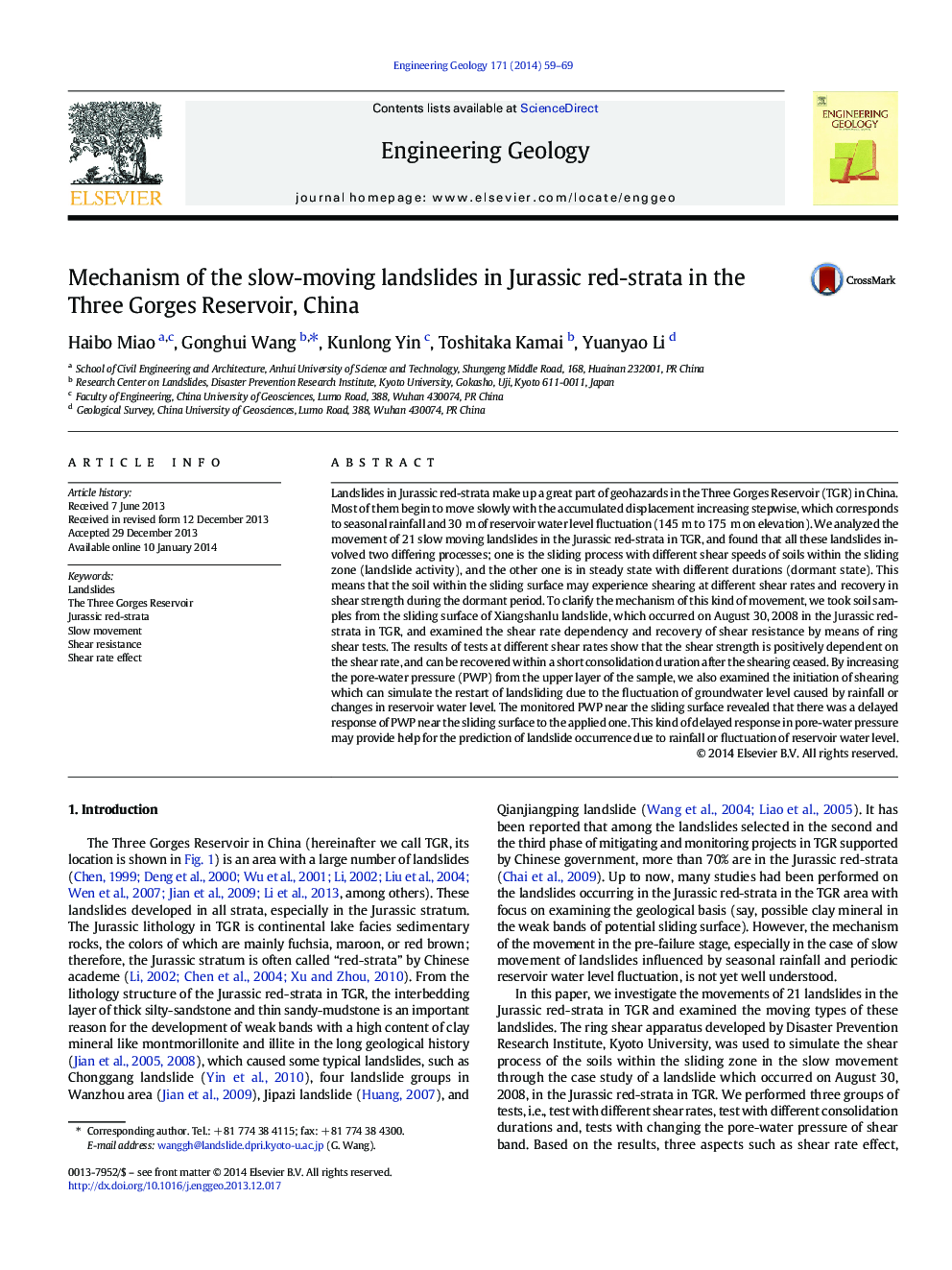| Article ID | Journal | Published Year | Pages | File Type |
|---|---|---|---|---|
| 4743614 | Engineering Geology | 2014 | 11 Pages |
•Slow-moving landslides in Jurassic red-strata in TGR were analyzed.•The residual shear strength is positively shear rate dependent.•Recovery of residual shear strength after cease of landsliding is significant.•Pore water pressure of the sliding zone showed a delayed response to outside changes.
Landslides in Jurassic red-strata make up a great part of geohazards in the Three Gorges Reservoir (TGR) in China. Most of them begin to move slowly with the accumulated displacement increasing stepwise, which corresponds to seasonal rainfall and 30 m of reservoir water level fluctuation (145 m to 175 m on elevation). We analyzed the movement of 21 slow moving landslides in the Jurassic red-strata in TGR, and found that all these landslides involved two differing processes; one is the sliding process with different shear speeds of soils within the sliding zone (landslide activity), and the other one is in steady state with different durations (dormant state). This means that the soil within the sliding surface may experience shearing at different shear rates and recovery in shear strength during the dormant period. To clarify the mechanism of this kind of movement, we took soil samples from the sliding surface of Xiangshanlu landslide, which occurred on August 30, 2008 in the Jurassic red-strata in TGR, and examined the shear rate dependency and recovery of shear resistance by means of ring shear tests. The results of tests at different shear rates show that the shear strength is positively dependent on the shear rate, and can be recovered within a short consolidation duration after the shearing ceased. By increasing the pore-water pressure (PWP) from the upper layer of the sample, we also examined the initiation of shearing which can simulate the restart of landsliding due to the fluctuation of groundwater level caused by rainfall or changes in reservoir water level. The monitored PWP near the sliding surface revealed that there was a delayed response of PWP near the sliding surface to the applied one. This kind of delayed response in pore-water pressure may provide help for the prediction of landslide occurrence due to rainfall or fluctuation of reservoir water level.
